Winter Bird Feeding Tips
- horticulturist and gardening expertDecember 14, 2019
Birds visiting my feeders, munching on the coneflower seeds and perching in the shelter of evergreens help brighten the long, often dreary days of winter. I am based in Wisconsin and although I travel across the country throughout the year, I spend quite a bit of time looking at a snow-covered landscape.
No matter where you live you can increase the number and diversity of birds by providing them with food, water and shelter. This is especially important as much of their habitat is being destroyed and challenging winter weather can make food and water a scarcity.
I designed my landscape to be a self-filling birdfeeder. It is filled with plants that provide seeds, berries and other fruit to feed the birds throughout the winter. Coneflower, Black-eyed Susans, gayfeather, penstemen, sedum, asters, perennial sunflower and goldenrod are among bird and gardener favorites. Even seeds lingering on summer and fall bloomers like hostas, cosmos, and coreopsis add to the bird buffet.
Trees and shrubs provide food and shelter. I am lucky enough to have several acres of woods behind my home. I have added some evergreens, as well as seed and berry producing shrubs and trees to other areas of my yard. Here are just a few of the trees and shrubs to consider adding to your landscape. Native sumac is a favorite of birds but very aggressive and can devour a small lot. Go vertical with American bittersweet but don't plant the invasive Oriental bittersweet. Flowering dogwood, roses, holly, crabapples, hawthorns, hackberries, native viburnums, chokeberries, eastern wahoo, northern bayberry, sassafrass, junipers, spruce, Mountain ash, redbuds, and oaks are a few more bird-friendly trees and shrubs to consider
Despite a wide variety of natural food I supplement with feeders to increase the number and diversity of birds visiting my winter landscape. Here are a few things to consider when adding feeders to your yard.
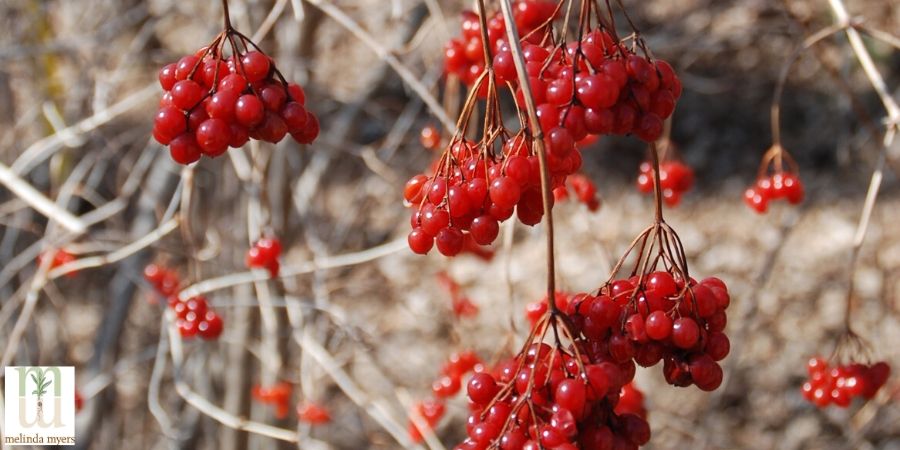
(Viburnum)
Feeder Placement is Key to Keeping Birds Safe
Create your bird feeding station where you can easily view the feeders and enjoy the colorful visitors and their songs. But proper placement is critical to keeping these visitors safe. Place your feeders within 3 feet or more than 30 feet from windows to prevent fatal collisions. When feeders are close to the window birds usually don’t generate enough momentum for fatal collisions.
If moving the feeders doesn’t work try altering the window. Walk outside to where the feeders are located. Then view the offending window from the bird’s perspective. If you can see through the window so can the birds. Changing the lighting or using window decals can help break up the view and discourage collisions.
Alter the outside of the glass for reflective windows. This way birds don’t see a reflection of the outdoors or themselves and fly into the window. Smearing soap on the window, hanging streamers, and even placing dead tree branches in front of the glass can help prevent collisions. Just make sure you can still view the birds when sitting inside.
Old screens and netting stretched taut over the window reduces the risk of fatal collisions. Birds that fly into the covering are more likely to bounce off than suffer an injury.
Plant shrubs that provide protective covering nearby so birds can make a quick escape from hawks and other predators. These plants also provide resting spots for birds in between visits to the feeders. Avoid placing feeders too close to trees where overhanging branches allow squirrels easy access to the seed. And steer clear of low growing shrubs that provide cover for outdoor cats that kill over a billion songbirds each year. Ten to fifteen feet is usually a good distance to keep between shrubbery and feeders.
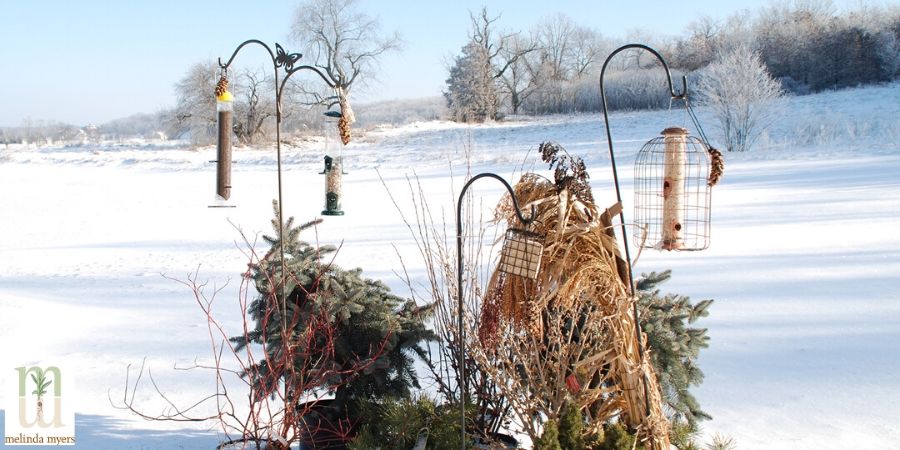
Brush piles and discarded Christmas trees can also provide winter shelter and protection from hungry predators. Make sure your Christmas tree was grown locally to avoid introducing any invasive pests into your landscape. Your local University Extension Service can inform you of any of these types of threats in your location.
Selecting the Best Seed to Attract Birds
Purchasing the best birdseed can be a challenge. Retail store shelves are filled with various mixes promising to attract your favorite songbirds. Quality seed mixes may cost more but contain a higher percent of desirable seed. This means more quality seed for each dollar spent. Many cheaper brands fill their mixes with grain sorghum, oats and wheat. Birds tend to discard these in favor of the fewer favorite seeds the mix contains. Check the label for contents and percent of the desirable seeds before making a purchase.
Black oil sunflower seeds are a favorite of cardinals, buntings, chickadees, finches, grosbeaks, jays, juncos, nuthatches, titmice and woodpeckers. Sunflowers are also a favorite of squirrels. When I lived in the city where squirrel populations were high, I used safflower seed instead. It kept the cardinals, grosbeaks, finches, doves and sparrows happy and eliminated squirrels at my feeders.
Nyjer thistle is a favorite of finches, goldfinches, siskins, and buntings. Purchase fresh seed and use a feeder that keeps it dry. Finches and others will avoid stale and wet nyjer thistle seed.
White millet is another popular seed and a favorite of ground feeders such as juncos, siskins and towhees. You will also find cardinals, finches, grosbeaks and sparrows feasting on these seeds.
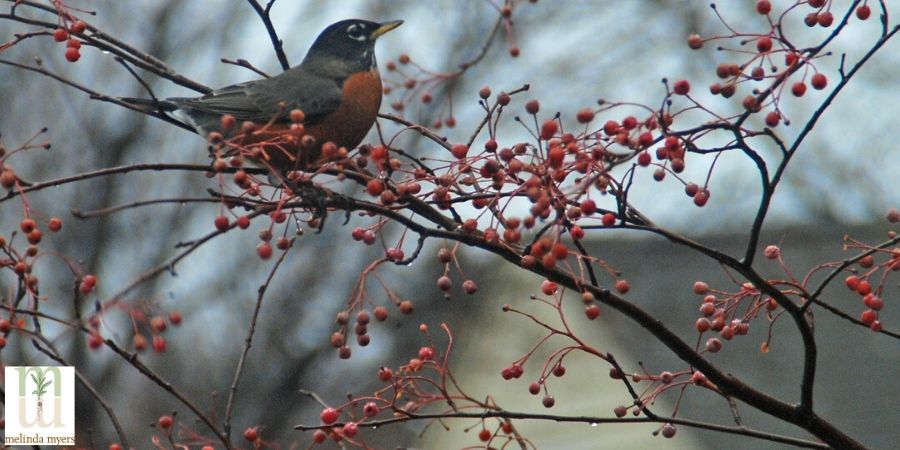
Nuts and cracked corn attract Jays, woodpeckers, nuthatches and brown creepers. Mix them with other seed or include a specially designed nut feeder in your feeding station.
Suet is an excellent food for woodpeckers, nuthatches, chickadees, and jays. This winter I have found a wider array of birds visiting my suet feeders. A few wrens and cardinals have joined the woodpeckers dining on the suet. And depending on your location, you may also see creepers, kinglets and warblers.
I have recently started using cylinder bird feeders. A preformed cylinder of birdseed fits over a rod and rests upon an open wire base or is inserted into a wire cylinder. There are different mixes for attracting various birds. I use the open feeder and find it stays cleaner, a variety of birds visit and most importantly the turkeys haven’t been able to knock it over and eat all the seed. Unfortunately, the squirrels and chipmunks do find their way up the post and onto the cylinder. Guess its time to install some squirrel baffles.
Be careful when sharing kitchen scraps with the birds. Best to keep leftovers for your family or the compost pile. Eggshells can be fed to the birds. They are an excellent source of calcium and grit but must be cooked before sharing with the birds. Eggshells can be contaminated with Salmonella bacteria. Shells from hardboiled eggs are fine since they have been cooked. Otherwise bake cleaned eggshells for 20 minutes at 250 degrees Fahrenheit. Allow them to cool then break into pieces smaller than a dime. Sprinkle on the ground or place in a shelf feeder or shallow container away from your feeders.
Keep the feeders filled with fresh seed to keep the birds visiting your garden. Once empty the birds will look elsewhere for food. It can take several weeks for them to return to dine.
Include a Variety of Birdfeeders
Select feeders suited to the birds you want to attract. Consider how easy they are to fill, clean and protect the seed from weather and predators.
You’ll attract a wide range of birds with tray and platform feeders. Unfortunately most of these do not protect the seed from rain and snow. Make sure this type of feeder has excellent drainage to minimize the risk of wet seed sprouting or supporting bacteria and fungi that can harm the birds. Reduce the risk of these problems by selecting a feeder with excellent drainage, one that is easy to clean and only add enough seed to feed visiting birds for a day or two.
On the other hand, hopper or house feeders protect seed against the weather and bird droppings. But if the seed gets wet, the closed environment is perfect for bacteria and fungi to thrive. Plus they are also more difficult to clean than platform feeders.
Tube feeders are cylinders with perches and feeding ports. Those with perches above the openings attract birds like goldfinches and chickadees that can feed upside down. Those with small perches discourage large birds from feeding. Select tube feeders with small ports for smaller seeds like nyjer thistle and ones with larger openings for large seeds. Consider blocking the bottom of the tube that extends below the lowest feeding port. Seed and water can collect there increasing the risk of fungi and bacteria.
Nyjer feeders are typically tube feeders with small ports or “thistle socks” made of fine mesh cloth. The seed in the thistle socks is subject to rain and snow so seed becomes wet. Use small socks and only when large populations of finches are present to quickly devour the seed in a couple of days.
Suet feeders are made of wire mesh or plastic coated wire. You may find suet sold in a mesh onion bag. Bird toes can become tangled in the mesh and if not released quickly can result in death of the birds. The suet cages are a safer option.
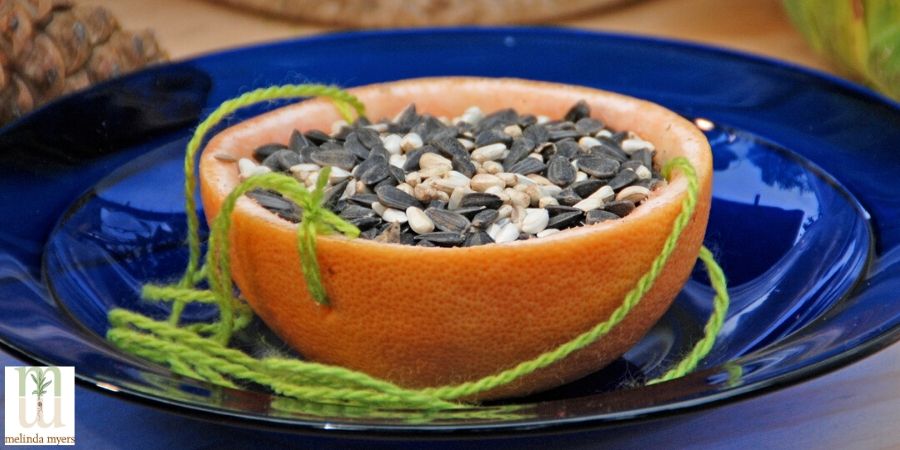
(Grapefruit rind as birdfeeder)
Window feeders attach to the glass or window frames. The close proximity to the window eliminates the risk of window collisions. Visiting birds usually stand on the seed while feeding. Their droppings often land in the seed increasing the risk of disease. Fortunately these feeders are easy to reach and clean. So keep them very clean and fill with fresh seed daily.
Squirrel baffles are designed to prevent these hungry animals from eating your birdseed. Homemade and commercial barriers are placed on the birdfeeder support, tree branches or any point of access. These are not always effective as the squirrels have all day to find a way to circumvent the barrier and reach the seed.
Keep Feeders Clean and Safe for the Birds
Clean birdfeeders regularly throughout the season. You’ll reduce the risk of disease caused by bacteria and other disease-causing organisms that can develop in dirty birdfeeders. Cornell University’s All About Birds website recommends cleaning feeders every two weeks and more often during wet weather or when bird diseases have been discovered in your area.
Wear rubber gloves to protect yourself and use a stiff bottlebrush or old toothbrush to clean those hard to reach places. Use a one-part non-chlorine bleach and nine-part water solution, commercial birdfeeder cleaner or a mild solution of unscented dishwashing soap.
Wash the inside and outside of the feeder, perches and feeding ports. Once cleaned, rinse with clear water and dry before refilling.
And don’t forget to clean the area around the feeder. Remove any damp and rotten seed and fruit birds may have dropped.
Provide Water Year Round
Attract birds with a birdbath or other water feature. Those of us in colder climates will need to add a heater, bubbler or aerator to prevent the water from freezing. Providing fresh water reduces calories and body heat birds use when melting snow and ice.
Make sure your birdbath can be left outside year-round. Many can be damaged when water freezes creating cracks and leaks. And you will need to keep them clean in winter just like you did during the warmer months.
An economical and convenient option is to purchase several heavy-duty plant saucers that won’t be damaged when the water freezes. Change these out every morning to ensure birds have clean fresh water each day.
Place the birdbath in sunny areas. Add a few stones so the birds can take a sip without getting totally wet.
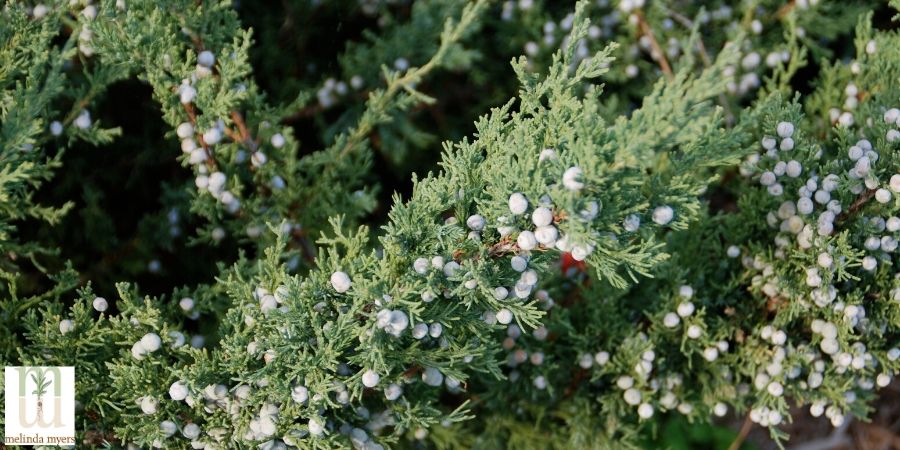
(Juniper Tree for winter bird protection)
Winter Shelter
Give birds a break from winter winds and cold temperatures. Make sure to add a few evergreens and shrubs if your landscape is lacking natural shelter. Those with small yards may want to team up with their neighbors to create an inviting environment with all the necessary ingredients.
Leave trees with cavities that birds use for nesting and roosting in the winter as long as the trees do not pose a hazard. Or consider purchasing or buying roosting boxes. These are a bit different from birdhouses as the ventilation holes are in the bottom so warm air is trapped. Visit All About Birds for plans and links to other resources.
Reap the rewards when investing a bit of time into creating a bird-friendly landscape. You, your family and friends will enjoy the color, motion and antics birds provide when feasting on seeds, sipping water or resting in your shrubbery.

